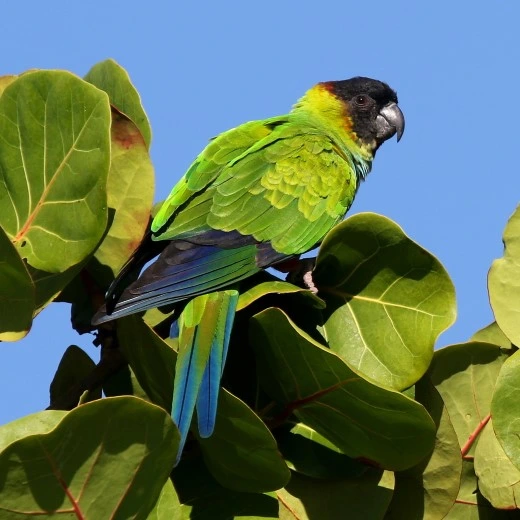Birdwatching in Manu National Park is a unique experience that attracts tourists from all over the world. This Amazonian park in Peru is home to more than 1,000 bird species, including many rare and emblematic birds such as the Andean cock-of-the-rock, Peru’s national bird. Visitors explore highland forests, lagoons, and cloud forests on a bird photography tour in Peru, observing the rich biodiversity of birdlife. For this adventure, it is highly recommended to hire local experts, such as Peru Jungle Trips, which offers specialized expeditions with itineraries designed for bird photographers.
How to Get to Manu National Park for Birdwatching
Manu is located about 300 km from Cusco, crossing the Andes into the Peruvian Amazon. The most common option is to travel by road: there are tourist buses that leave early from Cusco to Paucartambo and continue to the Reserve. The trip lasts between 8 and 12 hours and passes through changing landscapes, from Andean heights to the jungle. Many travelers prefer this route for the scenic views and for acclimatization.
By plane (less common option)
It’s also possible to fly to Boca Manu, although flights are limited and weather-dependent. From Boca Manu, you cross the river by boat to enter the park. Another option is to fly to Puerto Maldonado and navigate the Madre de Dios River to reach the reserve.

Best Birdwatching Spots in Manu National Park
- Limonal Interpretation Center and Manu Aguajal: From the observation tower, you can spot species such as macaws, tanagers, woodpeckers, and marsh birds. It’s one of the best spots in Manu.
- Cocha Salvador: A popular lagoon where you can see giant otters, toucans, parrots, parakeets, and more. Explored by catamaran, it’s ideal for photography from the water.
- Cock-of-the-rock leks (San Pedro): In the cloud forest near San Pedro, where males gather at dawn for courtship displays, creating a unique natural show. Visitors typically arrive at the San Pedro viewpoint at dawn to enjoy the colorful dance of these orange birds. It’s one of the most intense birdwatching experiences in Manu.
- Macaw clay licks: In some riverside areas (near Pakitza or even Boca Manu), there are clay cliffs where large flocks of macaws and parrots gather. Perfect for action shots of birds. You can photograph dozens or even hundreds of red, green, and other macaw species perched on clay walls.
- Cloud Forest and Andean trails: Between 1,600 and 3,800 m elevation, the cloud forest offers quetzals, tanagers, and hummingbirds. It’s estimated to house over 800 bird species.
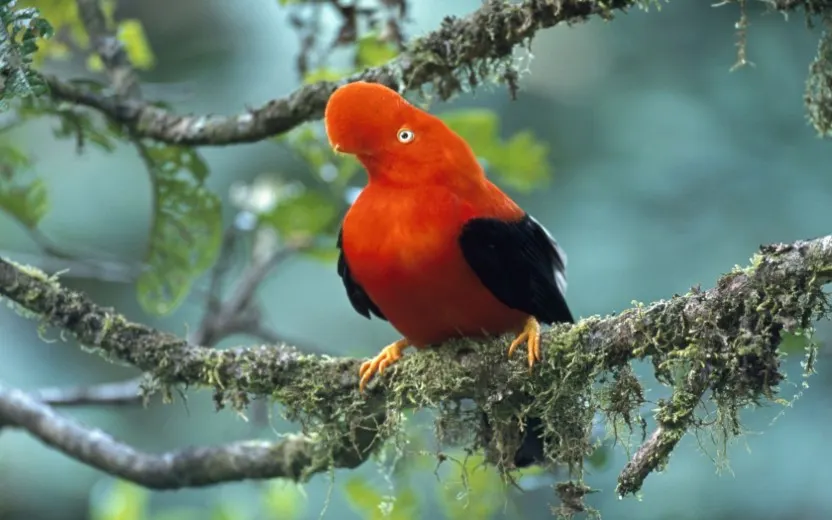
Best Birdwatching Locations in Peru
- Manu National Park (Cusco/Madre de Dios): Over 1,000 species, the most biodiverse.
- Tambopata National Reserve (Madre de Dios): Virgin rainforest with jungle lodges, a close alternative to Manu.
- Ballestas Islands and Paracas Reserve (Ica): On the coast, hosting large colonies of migratory seabirds like flamingos and boobies.
- Colca Valley (Arequipa): Known for the Andean condor and highland birds.
- Abra Málaga (Cusco): A high mountain pass near Ollantaytambo that merges Andean and Amazonian cloud life; pairs well with Machu Picchu.
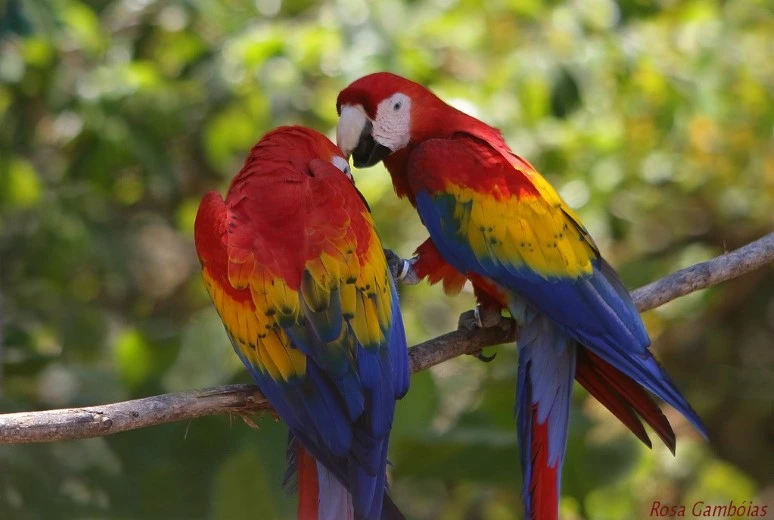
Most Sought-After Birds by Photographers in Manu National Park
Wildlife photographers come to Manu in search of colorful and striking species. Some of the most desired include:
- Andean Cock-of-the-rock (Rupicola peruvianus): Peru’s national bird, with bright orange plumage (male).
- Macaws (red, green, chestnut-fronted) and parrots: Their flocks in flight or on clay licks are spectacular images.
- Harpy Eagle (Harpia harpyja): The most powerful raptor in the jungle; difficult to photograph but an Amazon icon.
- King Vulture (Sarcoramphus papa): A large, colorful Amazonian vulture, impressive in flight.
- Mountain toucans (e.g., gray-breasted toucan): Birds with large bills and striking plumage.
- Quetzals (crested and golden-headed): Brightly colored Andean passerines.
- Andean motmot: A picturesque bird with a racket-shaped tail.
- Tanagers and hummingbirds: Tiny, colorful birds in dense vegetation.
These are just a few examples; in reality, Manu National Park hosts hundreds of birds of interest. The cock-of-the-rock and macaws are symbols of the park and the most anticipated by photographers. There are also quails, hoatzins (stinkbirds), and other unique Amazonian species that enthusiasts aim to capture with their cameras.
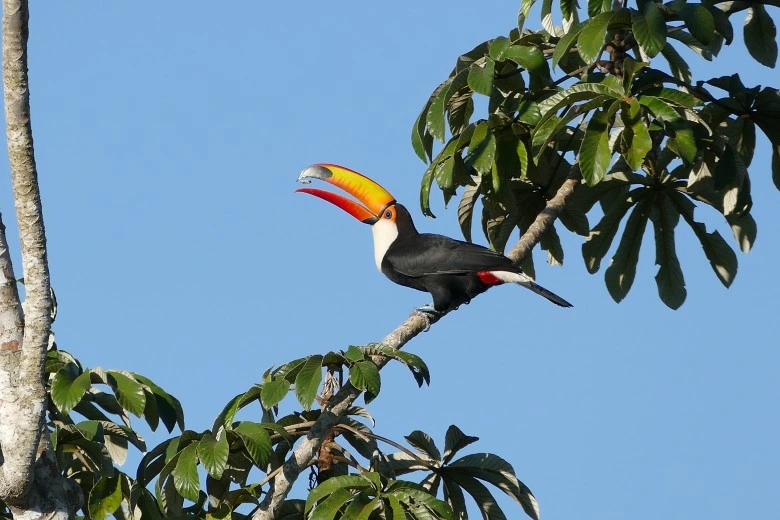
Best Season for Birdwatching in Manu National Park
The best season is the dry season, from May to October. During these months, there is less rain, better bird visibility, and accessible trails. It’s ideal for wildlife photography in Manu.
Bird Breeding Season in Manu National Park
Most Amazonian birds breed during the rainy season, when fruits and insects are abundant. In Manu, this usually happens at the end and beginning of the year. For example, the jabiru stork (a companion to the jungle landscape) builds nests and raises chicks from December to May. During that period, pairs build tall nests and both parents incubate the eggs.
Other birds also engage in courtship and nesting behaviors in both high and low jungle. It’s worth noting that the cock-of-the-rock’s vibrant “dances” at leks take place right before the rainy season begins; in those months (May to September), the males compete for mates, creating the natural spectacle Manu is famous for.
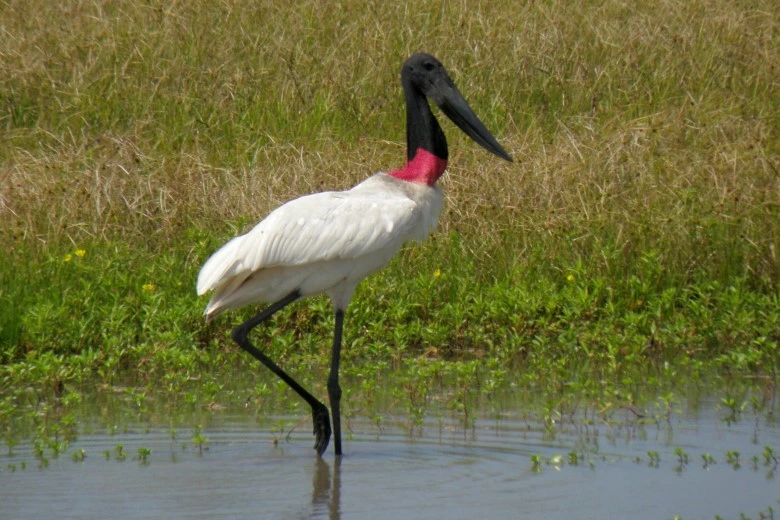
Tips for Birdwatching in Manu National Park
- Travel during the dry season (May to October): For better weather conditions.
- Wake up early: Birds are most active at dawn. To see the cock-of-the-rock, arrive very early, as their displays happen with the first light.
- Bring the right gear: Carry binoculars and a camera with a telephoto lens (300 mm or more). Use a high shutter speed and consider a tripod or monopod.
- Clothing and hydration: Wear neutral colors (green, brown), bring a rain jacket, hat, sunblock, and repellent.
- Silence and respect: Walk quietly, don’t use flash, and follow your guide. Don’t chase birds.
- Specialized guides: Hiring an expert local guide improves your chances of sightings.
- Bird-friendly lodging: Staying at lodges near key points allows you to see birds right from your accommodation.
- Be patient: Some birds require silent waiting. Bring snacks and stay alert.
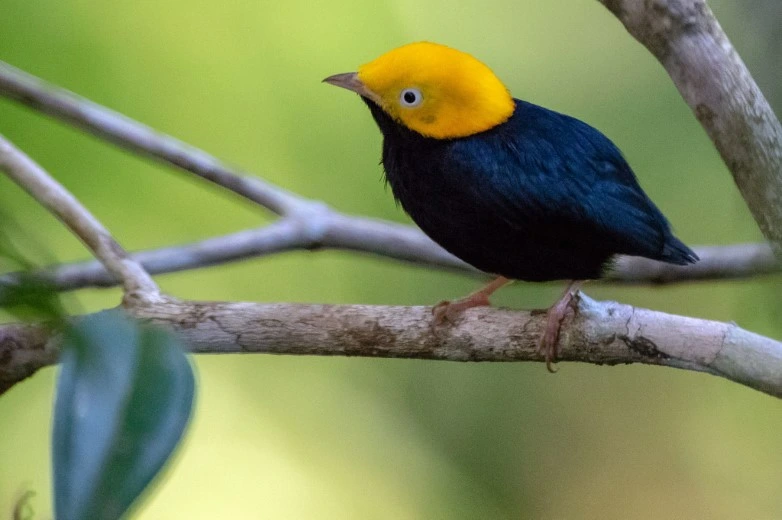
Tips for Bird Photography in Manu National Park
- Soft natural light: Take advantage of the “golden hour” (sunrise and sunset) to get warm light and soft shadows. Avoid midday sun.
- Eye-level composition: Photograph at the bird’s eye level for a more natural background and immersive perspective.
- Shutter speed and focus: Use a high shutter speed (1/1000 or more) to freeze flight and continuous autofocus (AF-C) for birds in motion.
- Burst mode: Shoot in burst mode when the bird is active to increase the chances of capturing a great pose.
- Tripod or monopod: Use a tripod for fixed points and a monopod when on the move, for better stability.
- No flash: Do not use flash. If light is low, increase ISO.
- Patience and quick reflexes: Stay alert; when a bird appears, focus and shoot quickly.
- Watch your framing: Avoid leaves or obstacles. Sometimes, just a small move can improve the background.
- Be well prepared: Bring extra batteries and frequently clean your lenses—the humid weather may fog up your gear.
- Don’t forget to carry extra batteries and clean your optics, as the humid climate of Manu can fog them up. With these tips and some prior practice, your bird photography tour in Peru will be much more rewarding.
Frequently Asked Questions About Birdwatching in Manu National Park
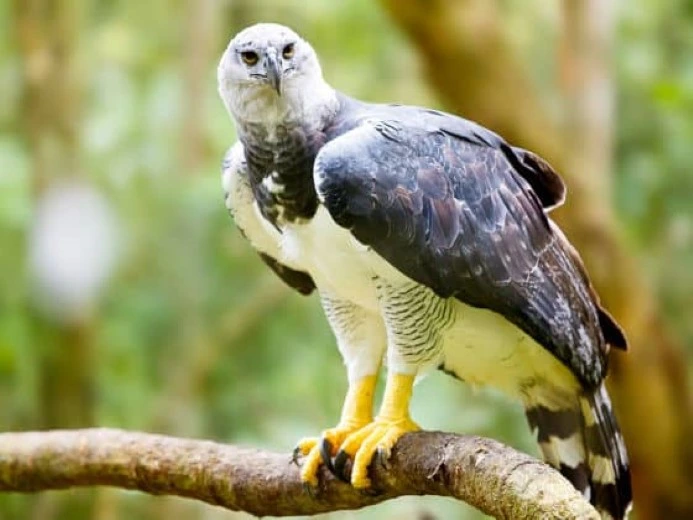
1. What is the best time of year for birdwatching in Manu National Park?
The best time is during the dry season, from May to October, when there’s less rain, trails are more accessible, and birds are more active at dawn and dusk. This season also allows for easier hikes and uninterrupted photo tours.
2. What bird species can be seen during birdwatching tours in Manu National Park?
You can spot more than 1,000 species, including the Andean cock-of-the-rock, macaws, hawks, tanagers, toucans, hummingbirds, and many rare birds found only in the Peruvian Amazon. It’s one of the most biodiverse places on Earth, ideal for wildlife photography enthusiasts.
3. Is it difficult to see the cock-of-the-rock in Manu National Park?
It’s not difficult if you go with a specialized guide. The agency Peru Jungle Trips knows the active leks, where males perform their courtship dance at sunrise during certain times of the year. With expert guidance, it’s possible to photograph them at safe distances without disturbing their natural behavior.
4. Where to sleep and what to bring to Manu National Park?
You can stay in eco-lodges or community-run shelters inside or near the park. Bring binoculars, a camera, insect repellent, sunscreen, rain gear, a water bottle, and neutral-colored clothing to avoid startling birds. It’s also advisable to bring a flashlight, extra batteries, and a field notebook to record sightings.

Birdwatching in Manu National Park is a unique experience for photographers and nature lovers. With over 1,000 bird species, including the cock-of-the-rock, macaws, and the harpy eagle, the park offers ideal landscapes such as lagoons, cloud forests, and clay licks. It’s best to visit during the dry season (May to October) and to book with Peru Jungle Trips, which offers bird photography tours for all levels.

